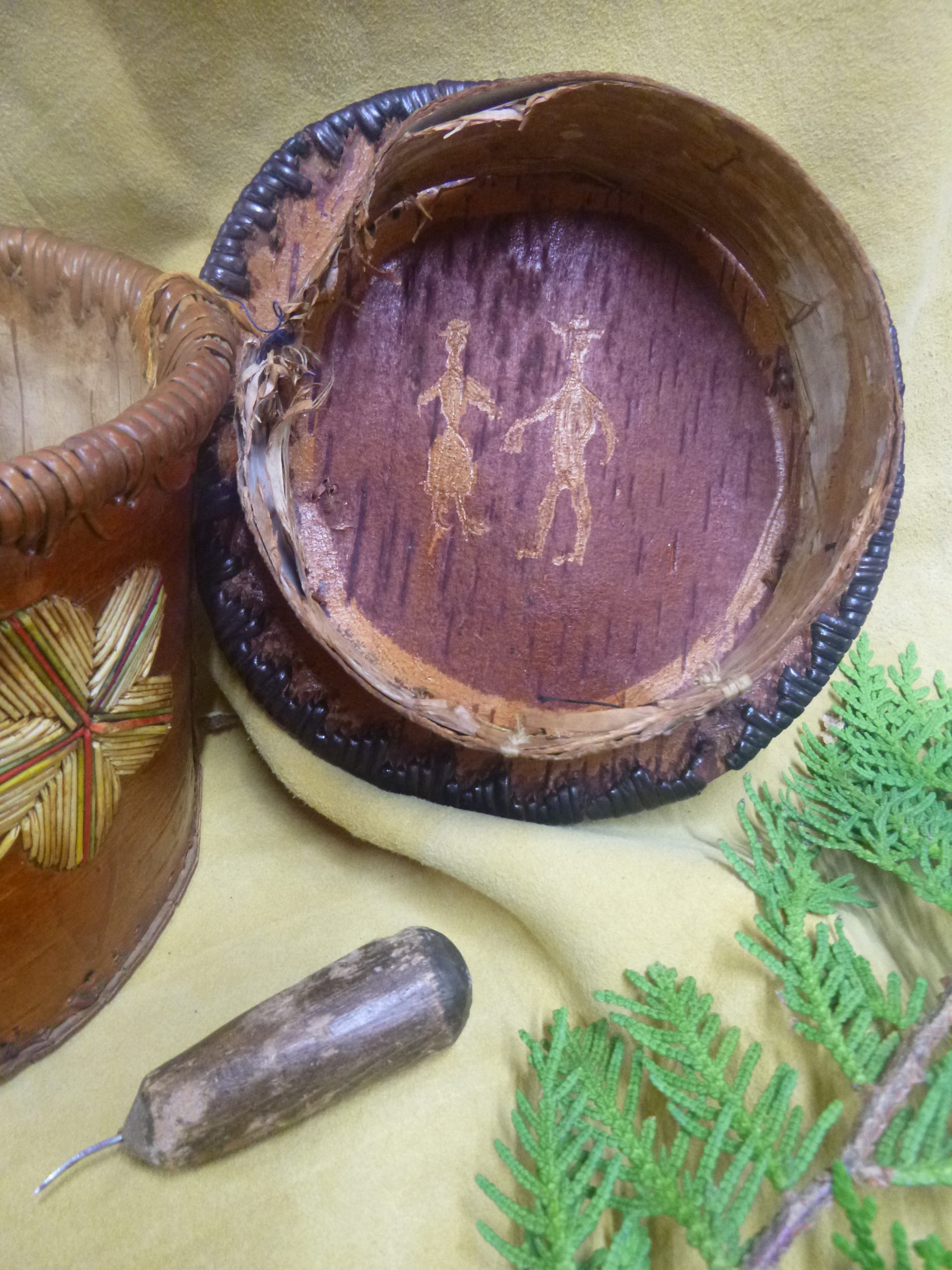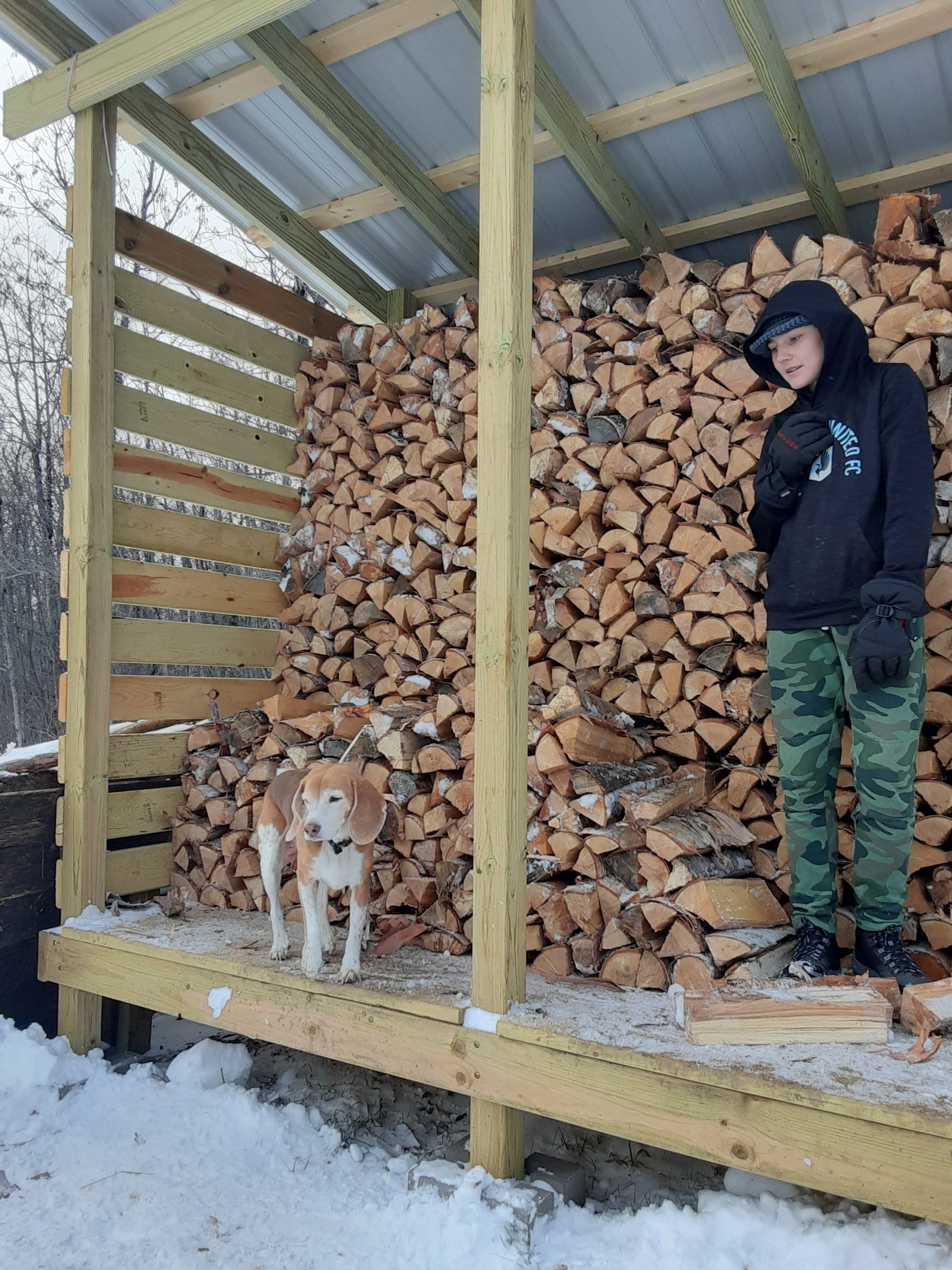
Editor’s Note: “Nibi Chronicles,” a monthly Great Lakes Now feature, is written by Staci Lola Drouillard. A direct descendant of the Grand Portage Band of Ojibwe, she lives and works in Grand Marais on Minnesota’s North Shore of Lake Superior. Her two books “Walking the Old Road: A People’s History of Chippewa City and the Grand Marais Anishinaabe” and “Seven Aunts” were published 2019 and 2022, and she is at work on a children’s story. “Nibi” means water in Ojibwe, and these features explore the intersection of indigenous history and culture in the modern-day Great Lakes region.
Just before Christmas, wind gusts reached 74 mph at the Grand Marais Harbor. The highest speed ever recorded. For three nights, sustained high winds cut power to all of Cook County. It blew roofs off buildings in downtown Grand Marais and anyone reliant on the electric grid had to improvise. It was a frightening experience, lying awake at night, wondering if the solar panels had blown over, or if the chimney had been dismantled by the sheer force of the northwest wind.
The old timers I know would have been prepared for a storm like that. The wood would have been split and piled close to the house, the backup generator filled with gas and the stash of batteries moved to the kitchen counter, just in case you needed a flashlight. Back then, a full woodshed was do-or-die.
My dad taught us how to stack wood properly. Always bark side up, the triangular shapes fitting together like a 3,000-piece puzzle. When we were kids, my sister and I shared the responsibility of stacking wood for the winter, while dad broke up the logs with a gas-powered wood splitter.
“Wood heat means thrice-warm,” dad would proclaim, watching us struggle to lift the heavy logs onto the row. There was a path to shovel from the house to the shed, snow to be brushed off the logs with your mittens and a slippery ramp to traverse that dad built inside the basement entryway. Every winter we would dump the full wheelbarrow at least once and have to start lifting all over again.
Now we order our supply of birch and maple from a local guy named Dave, who has his own birchwood kiln-drying operation. Originally from Canada, Dave’s arrival with a truckload of split and dried firewood always comes with a good dose of positivity, “Beauty day, eh?”
Beautiful, unless the wind is blowing the roof off your house. Climatologists have been warning about how climate change will result in more extreme weather events, like the one we experienced before Christmas. Other tell-tale signs are a balmy Lake Superior, and the shifting of tree species in the boreal forest—which extends from the Lake Superior area to northern Canada and Alaska. The boreal woodlands are the world’s largest forest system, holding vast carbon-rich peatlands which also cover Scandinavia and much of Russia.
As a kid, I took those birch logs for granted, and may have even cursed them, especially the heavy logs dad called “overnighters.” As an adult who now makes my own choices about how to live in the world without doing an excess of harm, I’ve made it my goal to learn more about the trees of our homeland.

My nephew Francis and Bee the Beagle in the wood shed. (Photo courtesy of Staci Lola Drouillard)
The Ojibwe word for the paper birch is wiigwaasi-mitig—or Nimishoomis wiigwaas—Grandfather Birch. Profoundly, the name “Ojibwe” is associated with the word ozhibii’ige, meaning “to write,” referencing the written history of the Midewiwin on birch bark scrolls. In her book Plants Have So Much to Give Us, All We Have to Do Is Ask: Anishinaabe Botanical Teachings (U of MN Press 2015), Mary Siisip Geniusz lays out the extraordinary number of traditional uses for birch. The bark is used to make jiimaanan (canoes) and makakoon (boxes). A long time ago these containers were used for cooking or storage and then later as decorative objects sold to tourists, like the ones that my great-grandmother Elizabeth used to make.
The inner bark can be eaten, and the sap tapped to make syrup. Birches have literally saved our people in times of drought or famine. The young foliage can be steeped into tea and used to ease stomach ailments, or made into a salve that will cure psoriasis. Our “uncle” Hank Amyotte actually made up such a remedy for one of my cousins, and her rash cleared up. Even the dead and rotting wood of the birch tree is put to good use as fuel for a slow-burning fire designed to smoke fish or preserve meat. One singular tree with so many gifts to make our human lives better.
So, what would the forest be like without birch trees? Peter Reich is a forest ecologist who studies that subject for the University of Minnesota and the University of Michigan at Ann Arbor. His work shows that in northern Minnesota, red maple is spreading across forests where birch, fir and spruce were common. “Our results spell problems for the health and diversity of future regional forests,” said Reich, “that in a worst-case scenario, at nearly 5-degree warming, a mark expected later this century if carbon emissions aren’t reduced, found northern Minnesota species did even worse.”
My dad (Poot) and his best friend Clem used to entertain themselves in the winter by driving around town examining how other people stacked their firewood. There were houses with many cords of wood all neatly stacked and organized inside a sturdily built woodshed. This was the gold standard. “Just look at all that birch Poot!” The two of them would shame houses that haphazardly left their logs in odd-shaped piles, or partially covered with one of those ubiquitous blue tarps that would start to tear and fray, once the northwest wind had its way with it. That sort of thing just didn’t fly with dad and Clem, who thought of a family’s woodpile as a measure of their worth.
According to Mary Siisip Geniusz and the teachings of our Anishinaabe ancestors, perhaps it is beyond measure.
Catch more news at Great Lakes Now:
Nibi Chronicles: Beach at Nishkwakwansing returned to tribal trust
Nibi Chronicles: The “Water is Life” festival goes beyond the music
Featured image: “Birch bark makak that my great grandmother Elizabeth Anakwad made, along with her awl.” (Photo courtesy of Staci Lola Drouillard)




